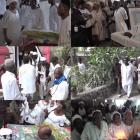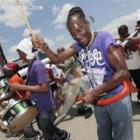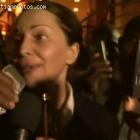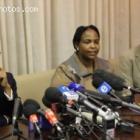ADVERTISEMENT
Photos
The history of Toussaint Louverture International Airport
Here is a picture of Haiti International Airport during the government of Dumarsais estime.
The History Of Toussaint Louverture International Airport. Toussaint L'Ouverture is the busiest Haitian international airport located in Tabarre, near Port-au-Prince. In the beginning, during the 1940s, it had been both a military and civil airport. Later, during 1950s and 1960s, it served as a U.S. military base in Haiti. In 1965, with the grant money collected from the "People of Haiti" (lottery, taxes, etc.,) and the U.S. government, the airport was developed in the name of then President François Duvalier. In 1986, it was renamed as Port-au-Prince International Airport. The name was changed again in 2003 by President Jean Bertrand Aristide in the honor of the Haitian revolutionary leader of Toussaint Louverture. The airport was severely damaged in the 2010 earthquake. President Martelly has opened the newly repaired arrival terminal on 25 November 2012. The main building serves as the International terminal. It houses two-story concrete and glass structure, few retail stores. Immigration and check-in facilities are located on the ground floor. The "Guy Malary Terminal" is used for domestic flights. There are specified areas for general aviation and cargo flight. The airport has three jet bridges, mobile stairs, and the ramp can handle 12 planes. There is a renewal program that to be completed by 2015.
Central Railway in Port-au-Prince, Cincinnatus Leconte government
Here is a picture of the Central Railway in Port-au-Prince at Rue du Quai during the government of Cincinnatus Leconte
Jean-Jacques Dessalines Michel Cincinnatus Leconte (born September 29, 1854) was the Haitian President between (August 1911 until his death on 8 August 1912). He was the son of Cinna Leconte and Florelia Raphael and the great grandson of the Jean-Jacques Dessalines, the founding father of Haiti and the autocratic first ruler of an independent Haiti under the 1801 constitution. Cincinnatus Leconte was a lawyer by profession who served as the Minister of the Interior to the President Pierre Nord Alexis. In 1908, when a revolt deposed Alexis, he went into exile in Jamaica and C. Antoine Simon became the President. He came back from exile in 1911 and gathered a rebellion force that ousted President Simon and on August 7, 1911, Leconte unanimously became the President for a seven year term with a set salary of $24,000 a year. His presidency is often considered as one of the efficient and cleanest government that Haiti ever had. He took many positive steps and numerous reforms. He increased teachers' pay, paved the streets, installed telephone lines, reduced the size of the army, etc., and they are only a few to name. He introduced a controversial discriminatory policy targeting "Syrian" population (actually most of them were Lebanese Christians) to protect Haitians from disloyal competition of the Easterners with uncertain nationality.
Cincinnatus Leconte death following Explosion at National Palace
Here is a picture of Haiti National Plalace, following the explosion that took the life of President Cincinnatus Leconte
His presidency was very short lived, he died on August 8, 1912 at the National Palace in Port Au Prince when a series of explosion took place, followed by a tremendous explosion that killed the president and his hundreds of soldiers. So great was the explosion that every house in the city was shaken. There are many opinions and debates on the exact cause of the accident-- was it an accident? Crime? Vengeance Ogou, the voodoo god? However, the most accepted opinion is that the powder magazines stored in the basement destroyed the National Palace and smaller explosions were covering up for an assassination.
Crowd asked for the return of Jean Bertrand Aristide from exile in South Africa
Here is a picture of a supporter of Jean Bertrand Aristide demanding his return from exile in South Africa
Aristide Returned From Exile In South Africa
Haitian government delivered his diplomatic passport in the month before his return and in this context, the South African Cabinet Minister Collins Chabane had said, " if he wants to go we can't hold him hostage." People in the Haitian political circle were of opinion that any of the election winners could reverse his long awaited return. His return just before the election was not liked by the U.S.. Even at the last moment, they were exerting pressure on South Africa to delay his flight.
As a two time President, he was never able to complete his terms. The first time he was ousted from power in a coup, but restored later through a military intervention in 1994 and during the second time, a rebellion in 2004 forced him to escape from the country. Aristide was a former slum priest in his early life, very popular among the poor Caribbeans.
Crowd welcoming Jean Bertrand Aristide from Exile in South Africa
Here is the picture of a huge crowd welcoming former Haitian President Jean Bertrand Aristide from Exile in South Africa.
Jean-Bertrand Aristide (61), the former president of Haiti ended his seven years exile in South Africa when he landed on the grounds of Toussaint L'Overture Airport, Port-au-Prince on March 18, 2013. Thousands of his supporters were waiting to welcome him at the airport. His American civil rights and immigration lawyer Ira Kurzban, had earlier announced his plan to return to Haiti. Before his departure from a small airport in Johannesburg, South Africa, Aristide had spoken to about 50 reporters in several languages. The South African Foreign Minister Maite Nkoana-Mashabane accompanied the former President Aristide, his wife, Milfred and two daughters, Christine (14) and Michaela (12) to the airport. His children have passed half of their formative years in exile. Before departing Johannesburg, the former President spoke in Zulu to announce---"the great day has arrived to say goodbye before returning home. Haiti is eagerly waiting as their dreams will be fulfilled on my return. The Haitian people will mark the end of exile and coup d'etats while peacefully we move from social exclusion to social inclusion."
Michel Martelly, Mildred Trouillot, Jean-Bertrand Aristide
Here is a picture of Michel Martelly, Mildred Trouillot and Jean-Bertrand Aristide taken during the historic meeting.
Haitian President Michel Martelly Historic Meeting With Jean Bertrand Aristide
This was the second meeting between these two leaders. Earlier they had met on October 11, 2011. At the first meeting, President Martelly disclosed his plan to organize a conference of former leaders of Haiti. Because he felt that all Haitians should come together in order to build a project, a shared vision is needed to put the country back on its feet. After that meeting, the former President while welcoming the effort of reinforcement had announced that, all necessary steps should be taken to ensure that we can agree and put our heads together. The meeting between these two Presidents was considered as one of the most important steps in the reconciliation process.
Historic meeting Michel Martelly and Jean-Bertrand Aristide
Here is a picture taken from that Historic meeting between Michel Martelly and Jean-Bertrand Aristide
As per news dated September 21, 2013, the Haitian President Michel Martelly, as part of the national reconciliation, had a private meeting with his predecessor, two-time President Jean-Bertrand Aristide. The meeting between the two leaders was on the part of a series of discussions between the President and the leaders of different opposition parties to resolve the impending crisis the country was heading to face for its failure to held overdue legislative and local elections. However, the details of their discussions were not disclosed to the press. The meeting was scheduled almost one week before a planned anti-government protests to mark the 12th anniversary of Aristide's first ouster as President. Aristide had served three different times as Haitian President: (i) in 1991, till he was removed in a coup; (ii) between 1994 and 1996; and (iii) from 2001 to 2004. On 28 February 2004, he was removed in a coup and within a disputed circumstance, arising out of violent rebellion, Aristide was flown out of the country by the U.S. His party, Fanmi Lavalas, was barred from participating the election of 2011.
Protest against Jean-Bertrand Aristide
Here is a picture of a protest during the government of Jean Bertrand Aristide
The Group of 184 was led by two of the country's most reviled multimillionaires. (1) Andy Apaid, Jr., a U.S. citizen and the owner of Haiti's largest sweatshops, and (2) Reginald Boulos, owner of a Haitian pharmaceutical firm whose products had killed dozens of poor Haitians. They both had good links with the influential media (ANMH). The G184, dominated by Haitian elites, was often criticized for two main reasons: (i) while selecting members from different sectors of civil society, the selection was dominated by the representation with one special interests, i.e., private sector business associations; and (ii) A vast array of other important civil society organizations were being ignored. Their experience, expertise and advice were not sought and utilized. Once G184 became synonymous to the Haitian proverb."Bourik travay, chwal galonnen" (the donkey does the work, the horse gets the profit).
Once it was alleged that, ten of its members (anti-Aristide) representing business communities who mainly control G184 and its projects, received a funding of $23 million from the Canadian International Development Agency (CIDA) to promote and encourage their businesses and Haiti's anti-Aristide movement.
Group 184 and the protest against Jean-Bertrand Aristide
Here is a picture of a massive demonstration organized during Jean-Bertrand Aristide reign
Group Of 184 And The Protest Against Jean Bertrand Aristide
The Group of 184 (Groupe 184), although now defunct, had been the Haitian public voice as well as it was the best salesperson for Haiti. It was the most powerful coalition of "civil society" organizations during the lead up to the 2004 coup that successfully destabilized Haiti's elected government and deposed President Aristide. It consisted both individuals and organizations, arranged in thirteen sectors like cultural, urban neighborhood, private enterprise, labor and peasant unions, feminist, media, human rights, non-governmental organization, etc.,. They had an agenda against the largest corporations in Haiti--the owners of such corporations constituted less than 1% of the population but owned over 50% of the country's wealth.
US Military Given order to Forces Armées d'Haïti, FAd'H
Here is a picture of US Military giving order to Forces Armées d'Haïti, FAd'H. The Haitian Military force was disbanded by Former Haitian President Jean Bertrand Aristide
On December 2011, President Martelly took some steps to rebuild the military forces abolished in 1995. He appointed a special commission who consulted international and domestic experts to develop a blueprint. On May 2012, the committee submitted a detailed report on the requirement of human and financial resources with the creation of a Ministry of Defense. On September 17, 2013, the effort took a shape when Jean-Rodolphe Joazile, the Haitian Defense Minister greeted the first 41 members of the new armed forces (all fresh high school graduates) on their return from 8 months training in Ecuador. After their comeback, they worked on road construction and other public service projects in central Haiti with the Ecuadoran military engineers for three months. Thirty of them were soldiers, ten engineers and one officer; they were accountable to the Ministry of Defense but not authorized to carry any gun or weapon immediately for the next three to four years until they are permitted to carry such either on government finance or from own resources.
President Martelly has an initial plan to build a primary force of 3,500 soldiers who will patrol the border and operate during the time of crisis. This will create many job opportunities for the young, as well. His government is considering to build a fund of $95 million to train and equip the new forces so that they can effectively replace 12, 000 U.N. Peacekeepers presently stationed in the country.
However, Jocelyn McCalla, a Haiti-born political observer has remarked that the country would be better served by creating a job program. Because an army is the last thing that Haiti needs at this point.


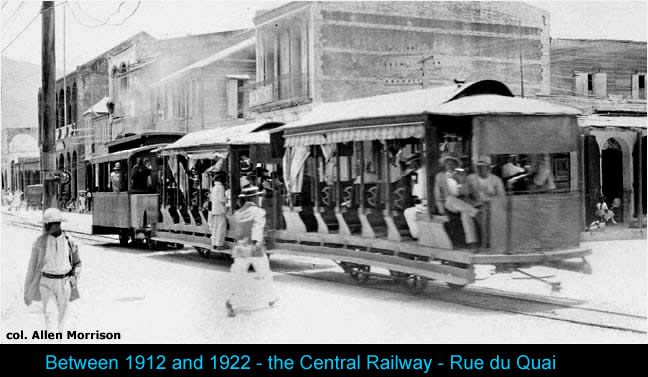
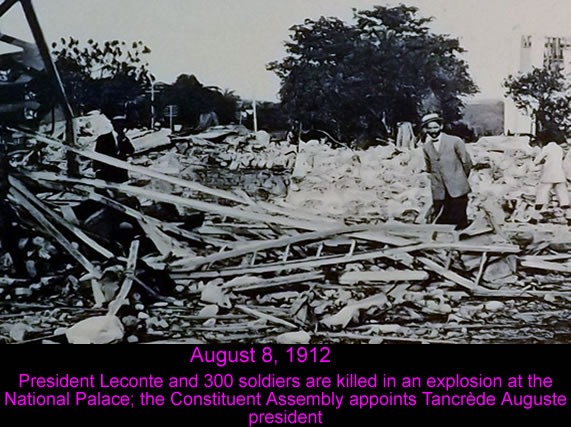
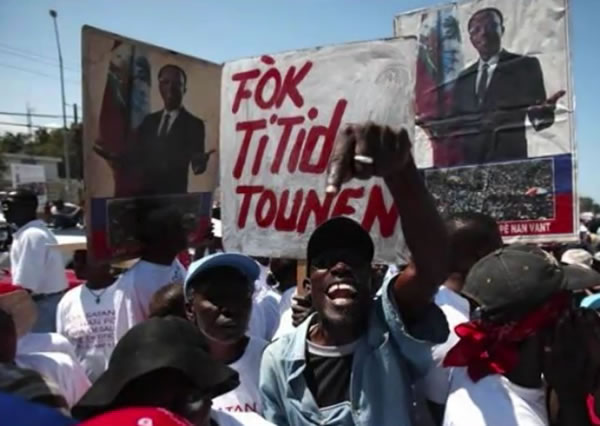
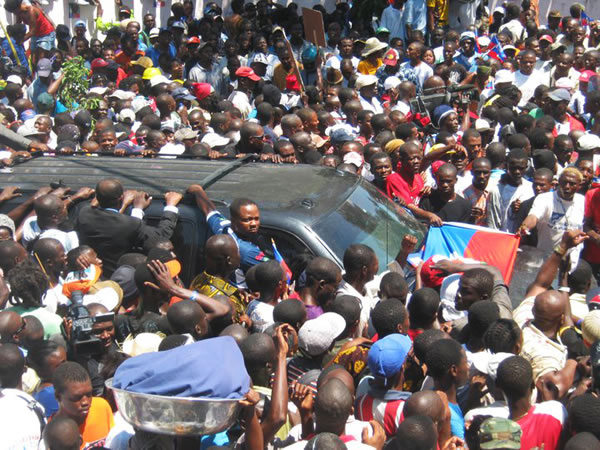
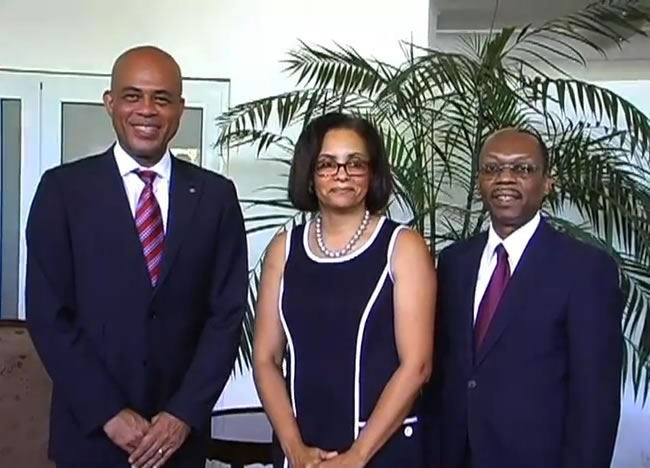
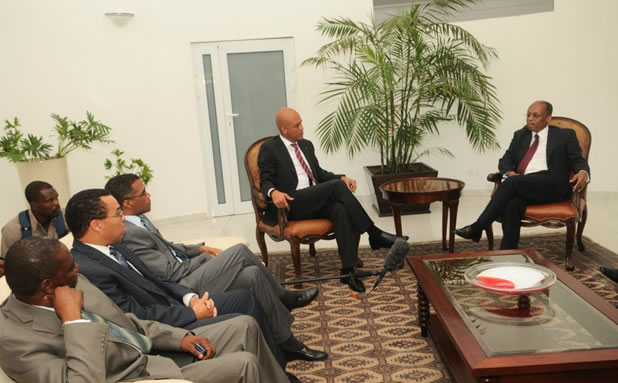
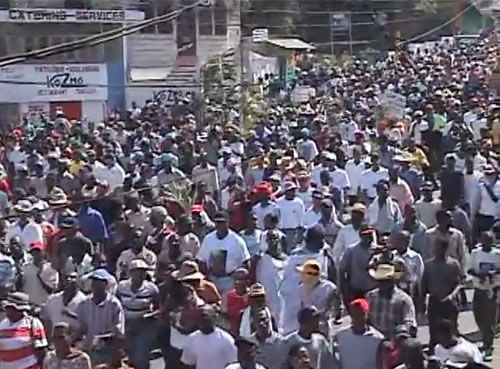
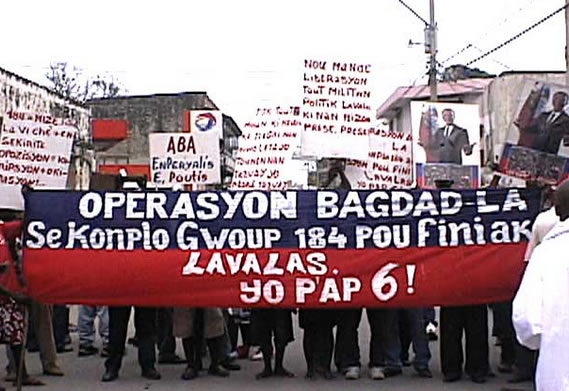
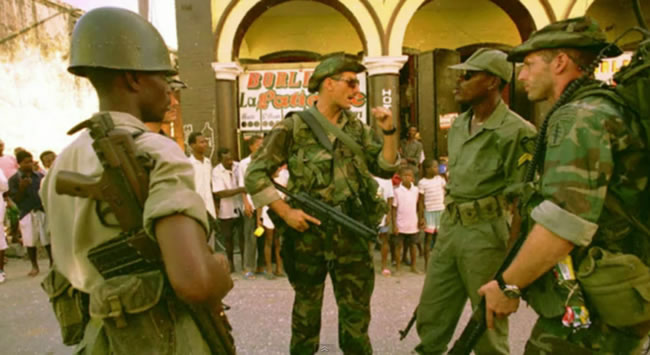
 Chelsea Clinton email Dad, Mom on Haitian relief incompetence
Chelsea Clinton email Dad, Mom on Haitian relief incompetence  Who will be the next president of Haiti?
Who will be the next president of Haiti? 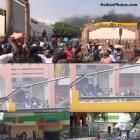 Delimart Plaza, Delmas 32, Port-au-Prince, Haiti being looted
Delimart Plaza, Delmas 32, Port-au-Prince, Haiti being looted 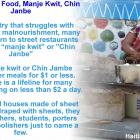 Haiti Street Food, manje kwit or Chin Janbe, for $1 or less
Haiti Street Food, manje kwit or Chin Janbe, for $1 or less 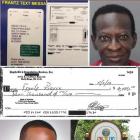 Commissioner Frantz Pierre indicted for accepting bribes
Commissioner Frantz Pierre indicted for accepting bribes  Meet Haitian-American professional baseball pitcher Touki...
Meet Haitian-American professional baseball pitcher Touki... 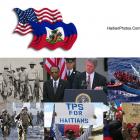 Haitians, the second largest black immigrant group in the US
Haitians, the second largest black immigrant group in the US 